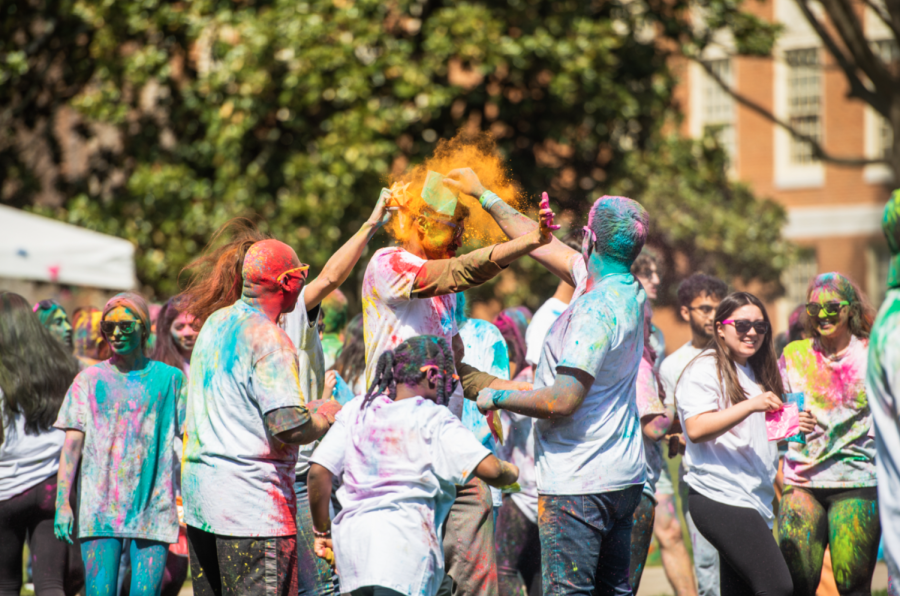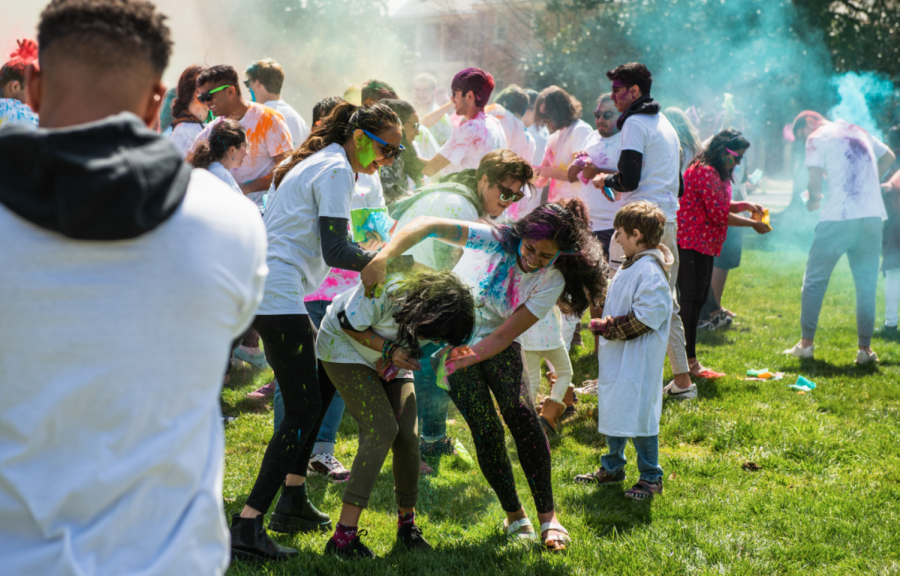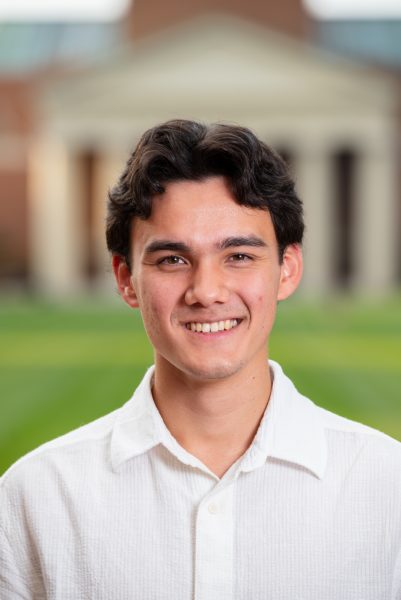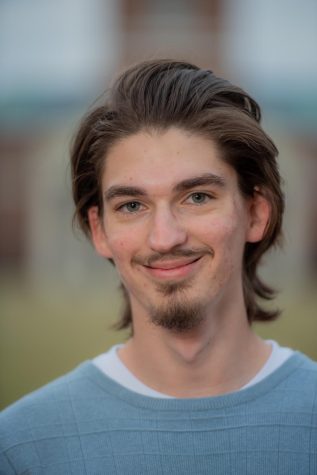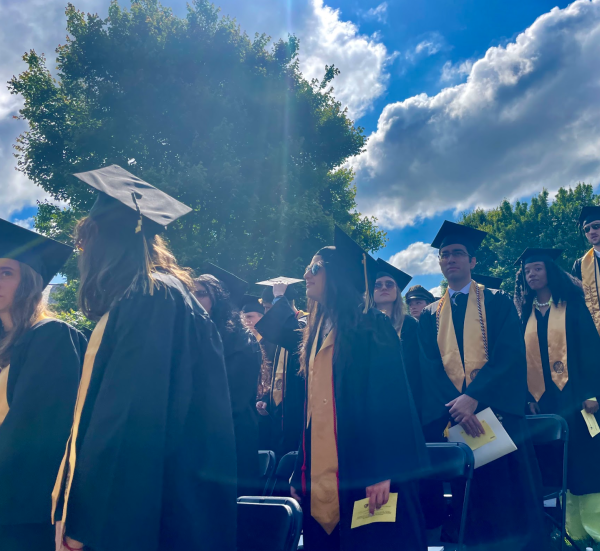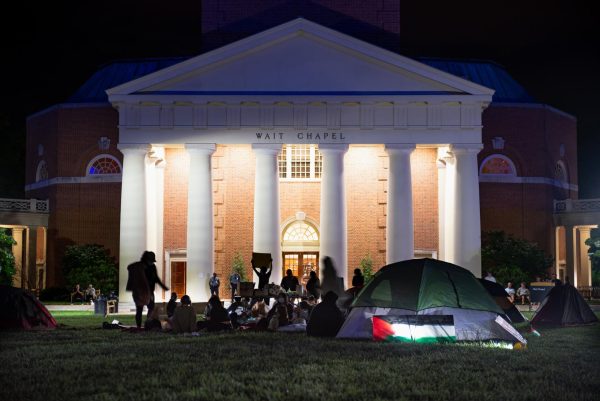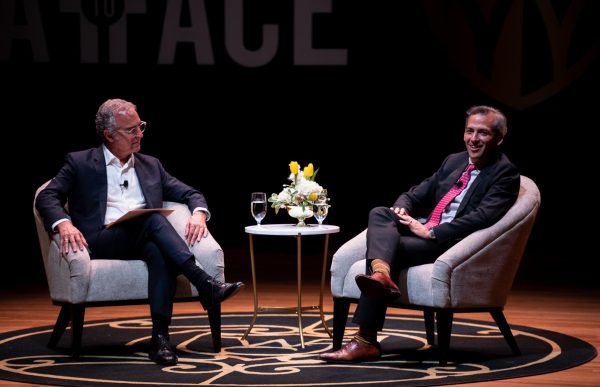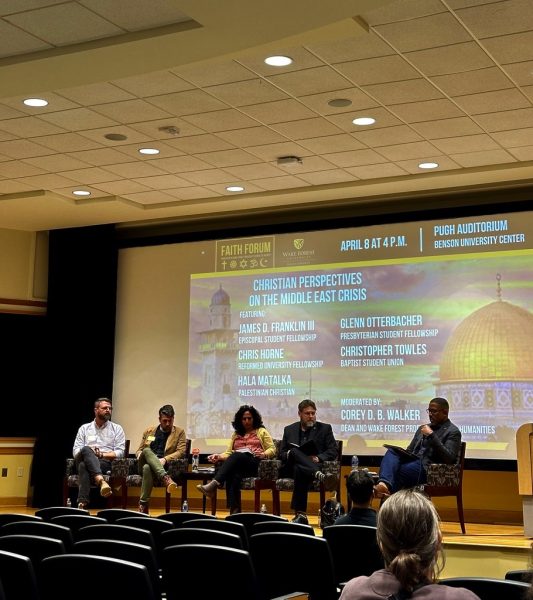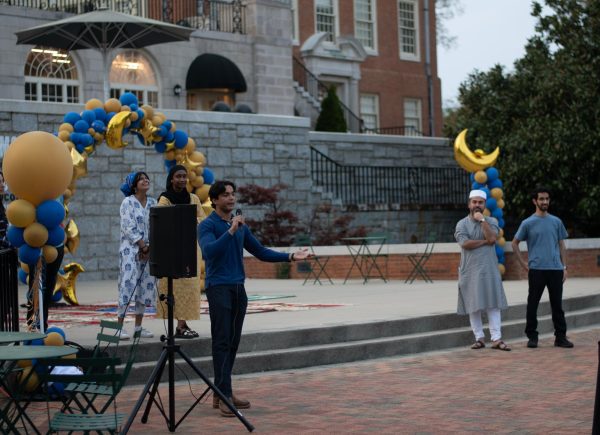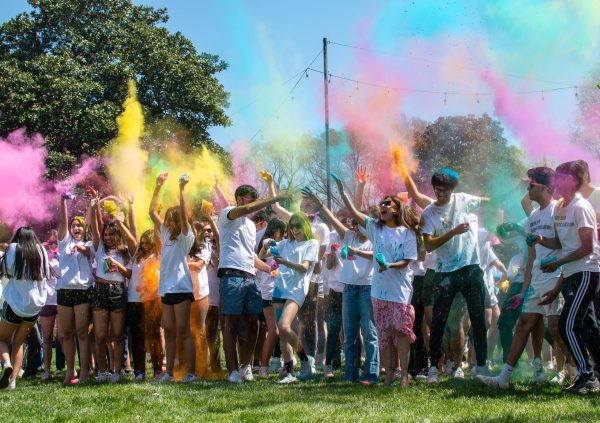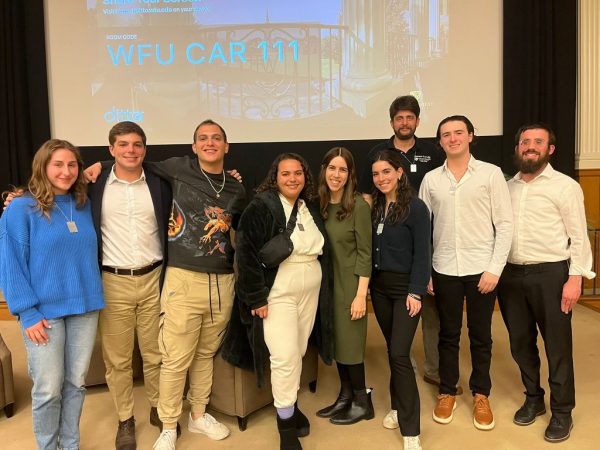Holi celebration returns with flying colors
The HSA and SASA bring a piece of Hindu culture to campus in the ‘Festival of Colors’
Students cover each other in colorful powders in observance of Holi.
March 22, 2023
More than 350 students and faculty gathered on Manchester Plaza to celebrate the Hindu festival of Holi on March 18. And despite a recent wave of colder weather, by the end of the celebration, faces were covered with the colors of spring.
Organized by the South Asian Student Association (SASA) and Hindu Student Association (HSA), the festival returned to campus in full force for the first time since 2020. Festivities included traditional South Asian foods, dances and ceremonies such as the throwing and smearing of bright, powdered colors on friends’ faces and white T-shirts.
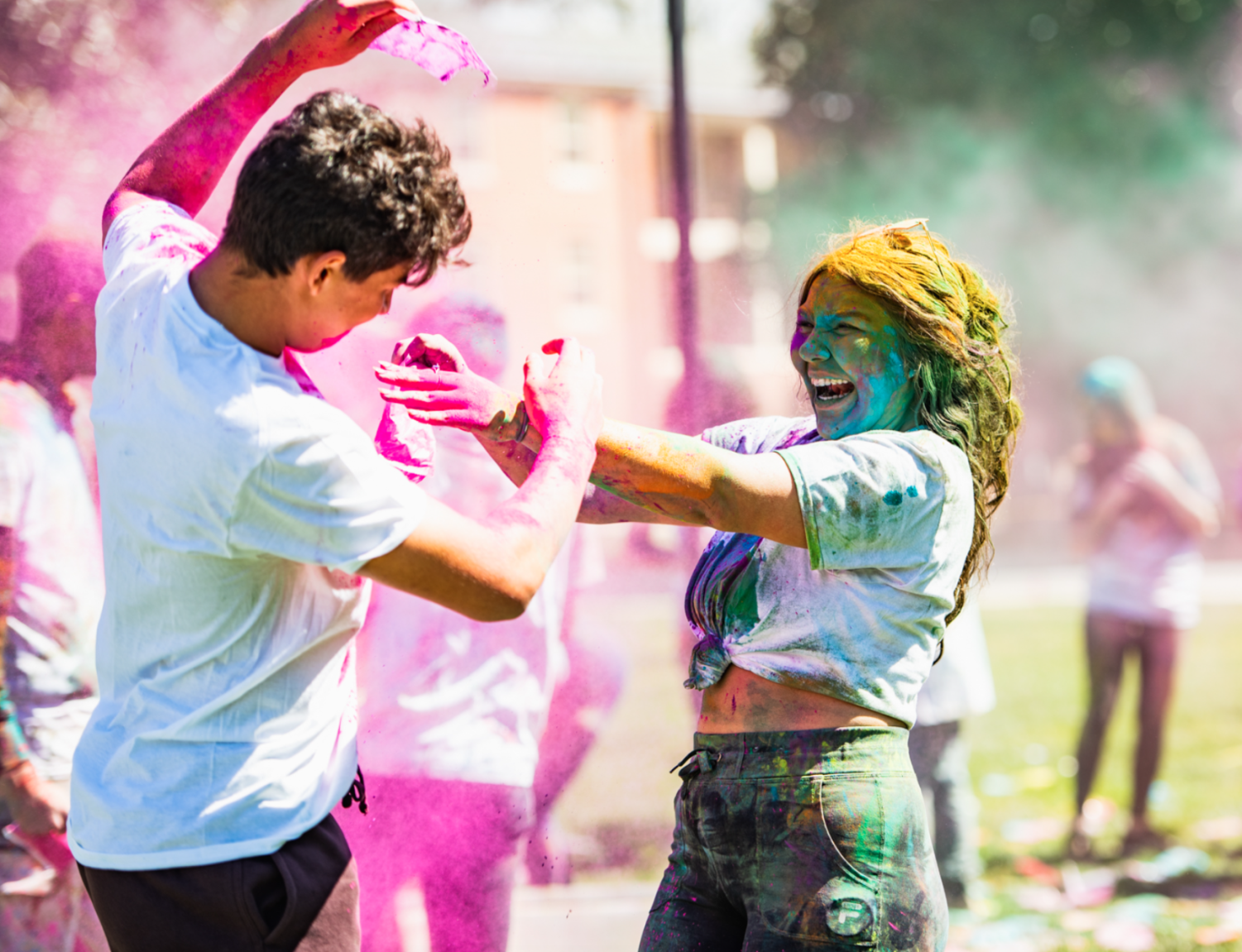
“Holi is the marquee HSA event of the year” HSA President Aman Khemlani said. “It’s considered a Wake Forest tradition… something that as HSA president, I want to grow and expand.”
Holi, also known as the Festival of Colors, is celebrated by millions of Hindus worldwide to mark the end of winter. It has been celebrated for centuries as a spiritual celebration of the divine love between the Hindu gods Radha and Krishna.
The festival may be best described by the senses: picture a vibrant rainbow of dyed starch powder, the aromas and flavors of chili chicken and paneer and the music of traditional dance performances by Deacon Dhamaal, Wake Forest’s Bollywood fusion dance team. For Harshit Gupta, a first-year student from New Delhi, India, these were reminders of a home more than 7,000 miles away.
“It’s a festival that reminds me of India,” Gupta said. “While you do end up missing India here, being able to see the whole community in one place is such a good feeling.”
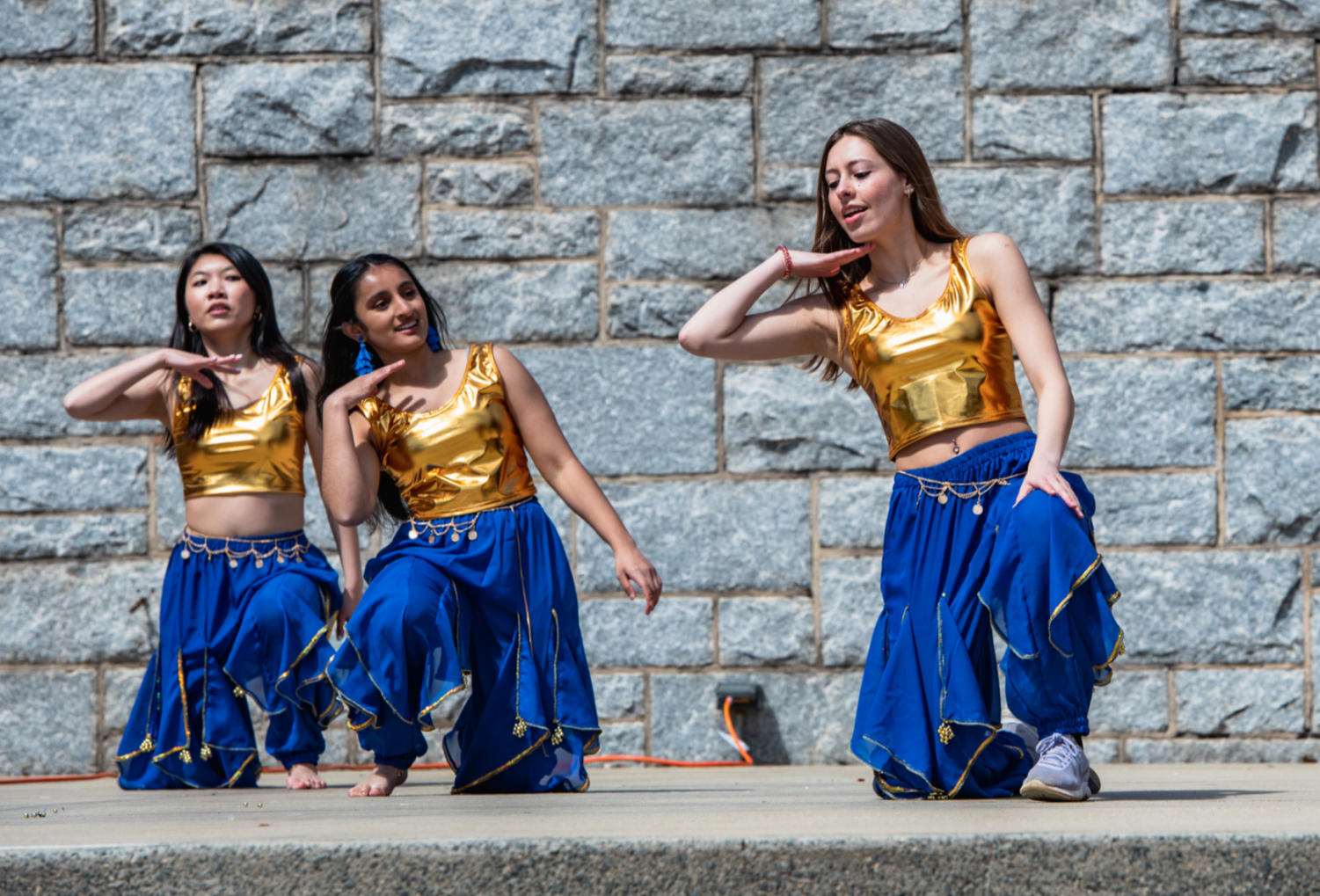
But the message of Holi is about more than sharing food and laughter — it’s about making campus a home for all its students, especially those who must rely largely on themselves to organize events that celebrate their culture, religion or heritage.
“I was genuinely excited because from my childhood, Holi was always a precious moment that I had with my family, religiously,” Khemlani said. “I’m glad that as a member of the HSA executive team, I’m able to create a safe place for Hindus on campus where they can practice their religion — at the same time teaching people about Hinduism and how Hindus in America practice their religion, besides the stereotypes that are addressed in pop culture.”
The Holi event’s aim of education is achieved through engaging students, faculty, and community members unfamiliar with the holiday to learn about, and take part in its festivities.
“Our goal is not only to celebrate with students that have celebrated Holi growing up,” junior and SASA President Anusha Vora said, “But also to share the rich culture of South Asia and the Hindu tradition with the broader Wake Forest community.”
As part of this community-oriented programming, the festival also featured performances from Innuendo, Wake Forest’s original co-ed a cappella group, and Lost in Translation, a student dance crew focused on K-pop, jazz and hip-hop.
“This year, we had so many professors come out with their families and kids… it was really exciting to share that tradition with our whole Wake Forest family,” Vora said. “It makes the whole student experience richer.”
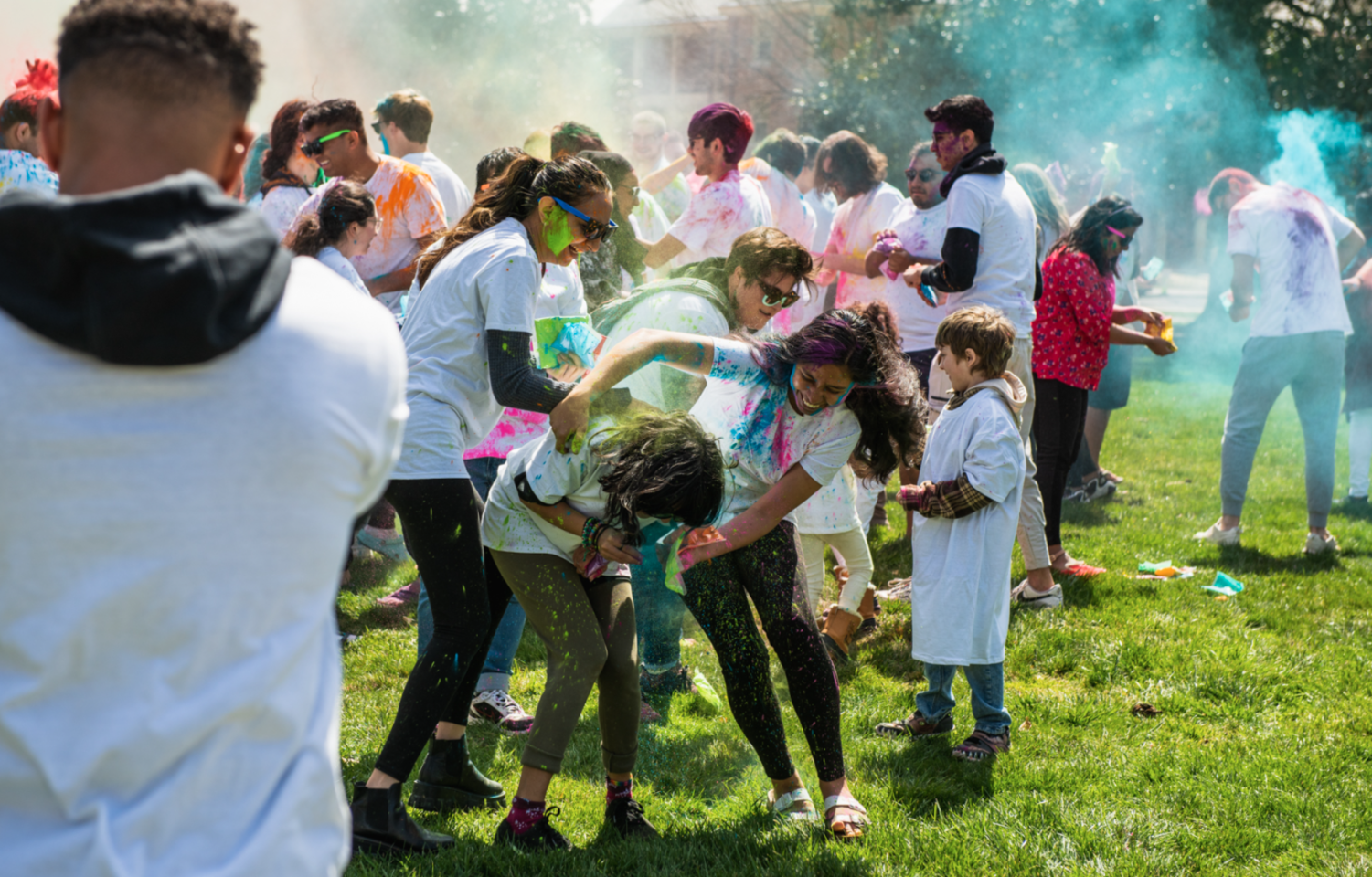
For freshman Anne Jones, Holi was a fun opportunity to learn about how other cultures celebrate the springtime.
“I think it’s really important that students can connect with cultures that are not their own,” Jones said. “When we threw the colors, it was crazy and a little chaotic but so much fun. I was entirely covered — it was awesome.”
The events of the day gave junior Mansi Patel — a first-generation American and member of both HSA and SASA — the opportunity to reflect on how these organizations and events like Holi have impacted her in a positive way.
“It’s given me a place to meet people who are like me, but also different from me,” Patel said. “I’m from the state of Gujarat, but a lot of my friends in SASA and HSA are from different Indian states. It’s really nice to meet people, even from within my own culture who are different.”
Patel also emphasized the importance of hosting events such as Holi in central areas of campus, where they draw more attention from people outside of the South Asian community — as opposed to Davis Field, where the event was held last year.
“I think that this year it was really cool to be able to do it in such a central place, and people see as they walk by and are curious and want to know what it’s about,” Patel said. “And that’s just how education starts.”
Update March 29, 2023: This article’s subheadline has been updated to more accurately reflect Holi’s status as a Hindu holiday. Further, the article’s body was updated to include comments from Hindu Student Association President Aman Khemlani that illuminate the importance of Holi as a religious celebration.


